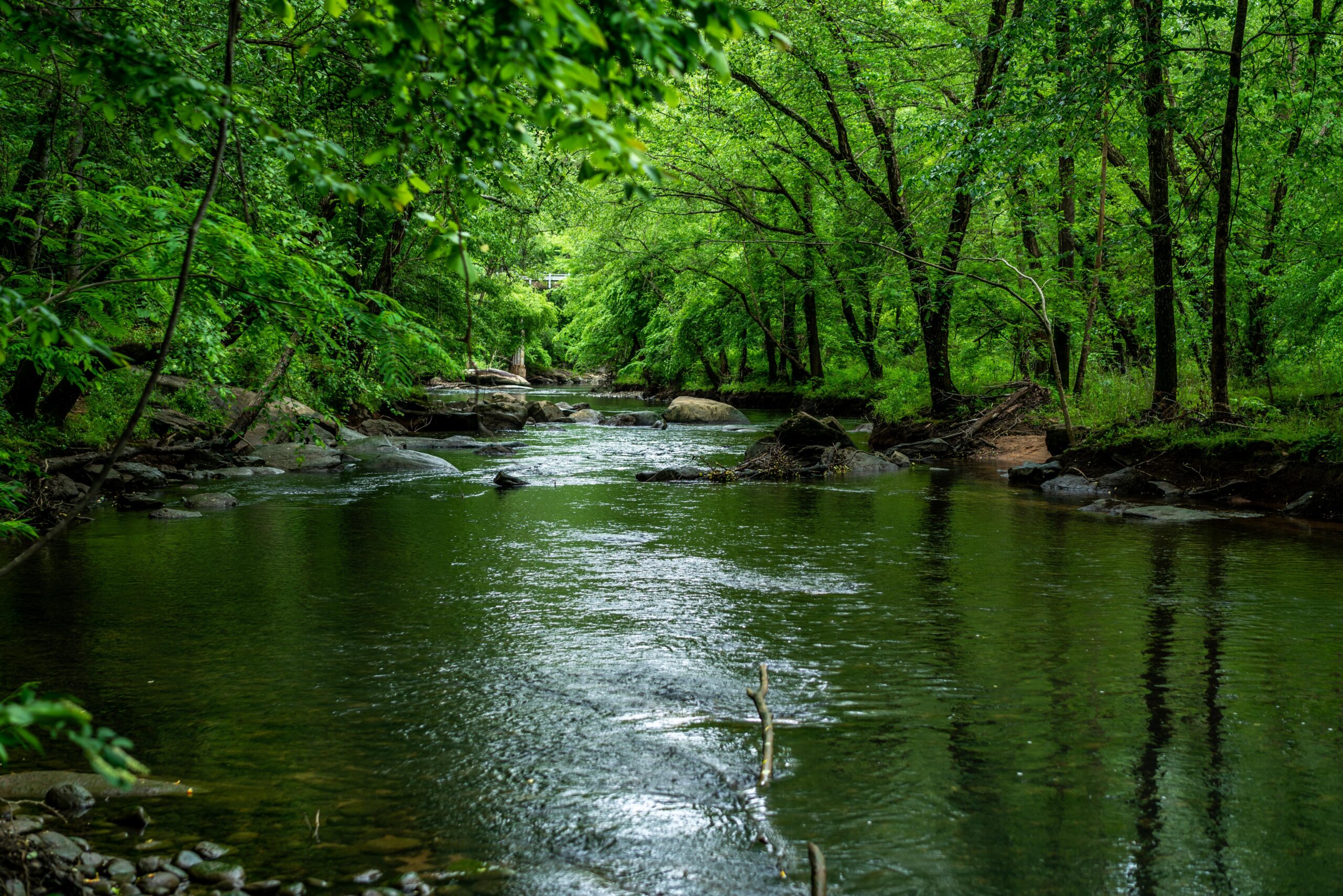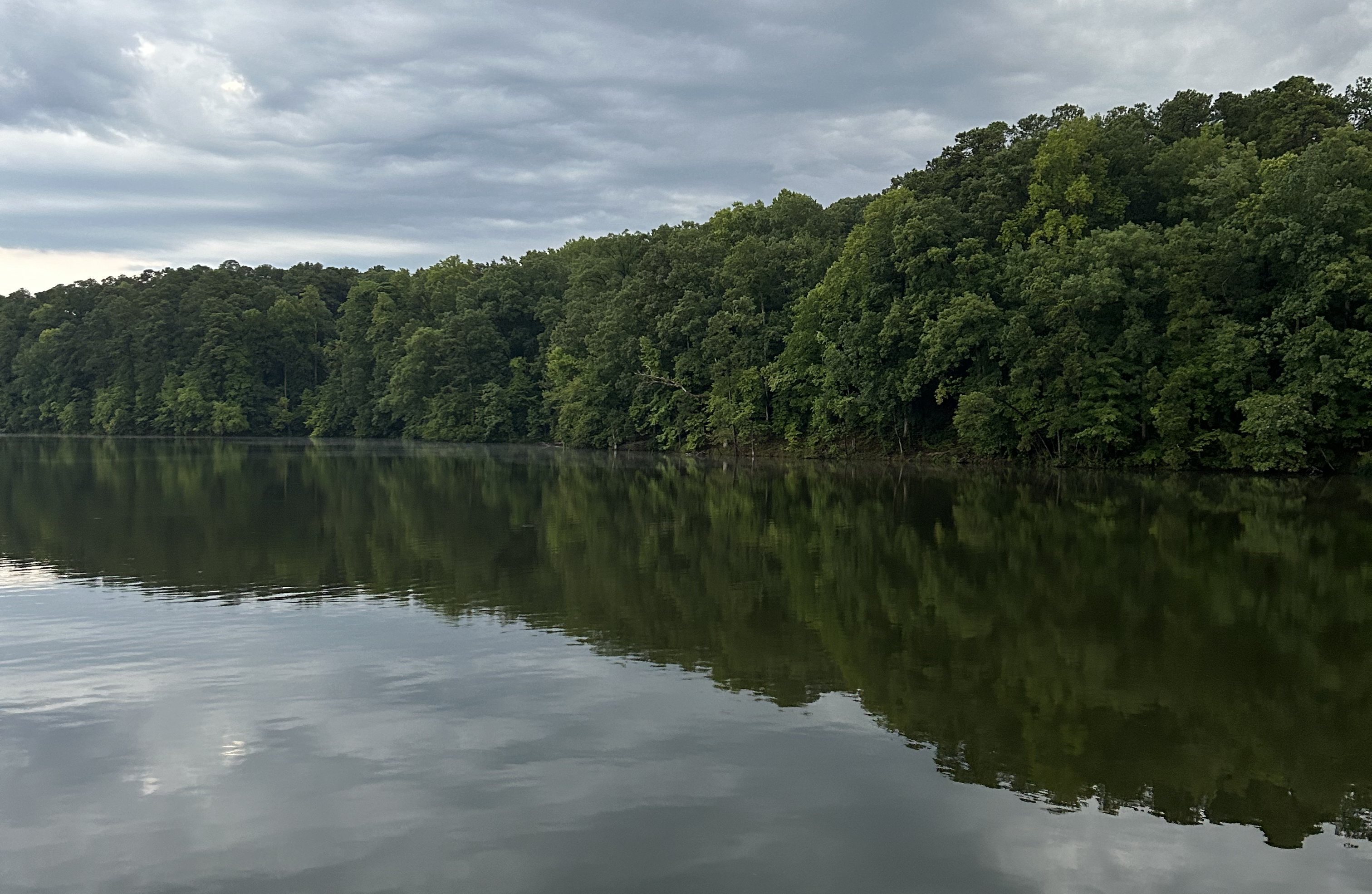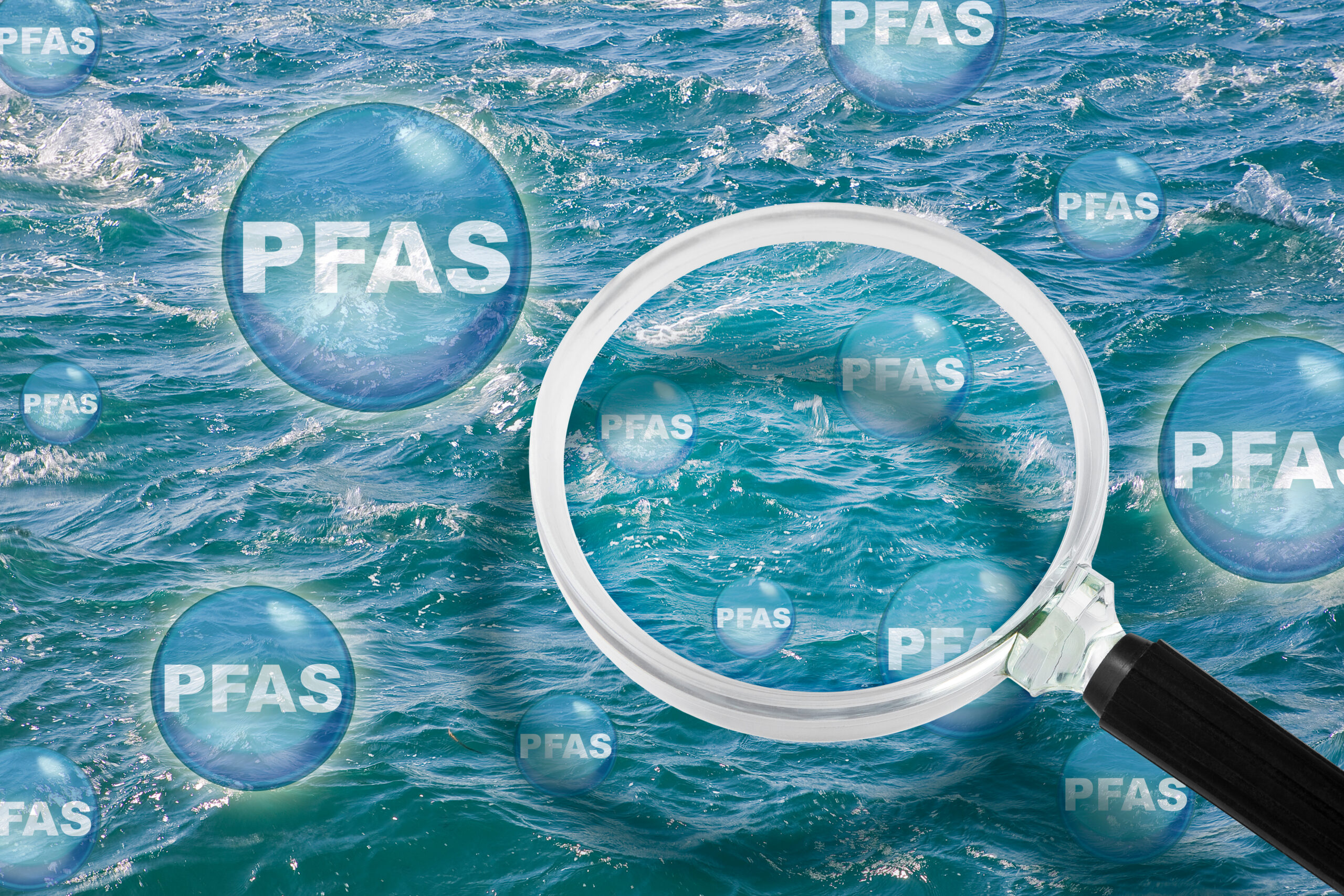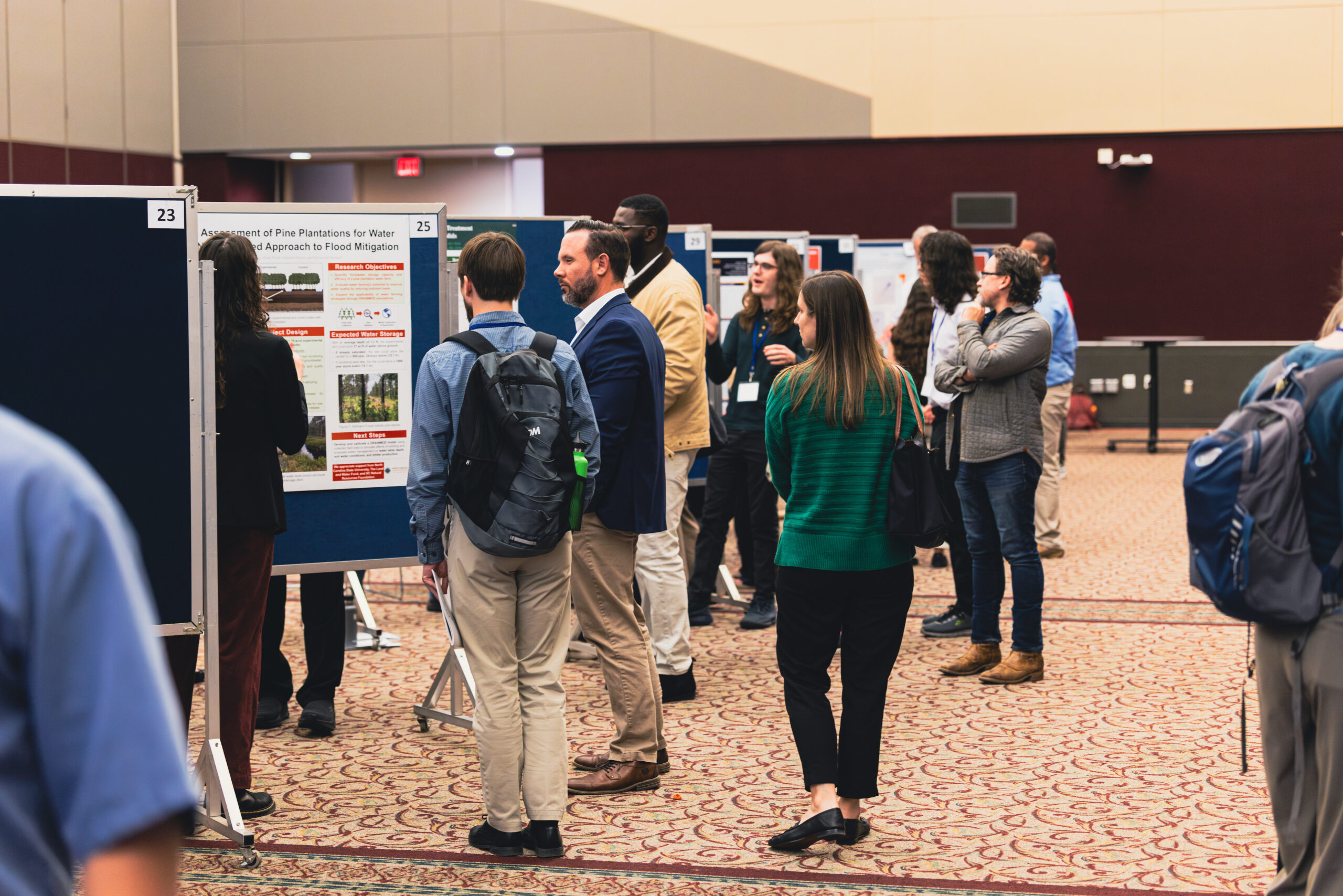New NC WRRI and NC Sea Grant Fellows to Conduct Research on Invasive Species, Stormwater Runoff, Algal Blooms, and More
Seven graduate students across North Carolina recently began new fellowship projects

Seven fellows were selected for WRRI’s “Mountains to Sea” request for proposals, focusing on coastal and freshwater resources across the state. Six student fellows are funded by the North Carolina Water Resources Research Institute and North Carolina Sea Grant, and one is supported by the Stormwater Consortium.
Their projects focus on timely topics including coastal water quality, invasive species, algal blooms, stormwater runoff, and more.
The fellows are current graduate students at North Carolina State University, East Carolina University, Wake Forest University, UNC Wilmington, and UNC Chapel Hill.
Ella Moore, North Carolina State University

Project title: Importance of Landfill Leachate as a Source of Biologically Available Nitrogen to North Carolina Coastal Waters
According to the North Carolina Department of Environmental Quality, there are over 1,000 landfills in the state where leachate can be generated. Landfill leachate is bio-reactive and a source of concern for nutrients and coastal water quality. This project aims to use a fluorescence model to quantify how much leachate from landfills is present in tributary streams to the Neuse and Tar-Pamlico estuaries. Understanding the extent to which nutrient-dense landfill leachate is polluting or contaminating coastal waters is essential to inform policy surrounding these contaminants.
Glory Kidimbu, East Carolina University

Project title: Invasive Species and Precipitation Shifts Influence Disease Dynamics in Aquatic Ecosystems
In North Carolina, there is growing concern about invasive species like the Asian clam, which has been able to displace native bivalves due to its effects on water filtration, nutrient cycling, and pathogen transmission. This project aims to understand how reservoirs like the Asian clam contribute to the concentration and transmission of T. gondii and other emerging biological contaminants. It will shed light on the role of aquatic invasive species in altering ecosystems and examine how they may contribute to pathogen transmission cycles. Additionally, this research will address changes in precipitation patterns and natural disasters, and how they influence the health and structure of aquatic ecosystems. The project highlights how environmental pressures shape disease dynamics and how environmental change can increase the risk of disease transmission in aquatic systems.
Jaime Cardenas, Wake Forest University

Project title: Use of Meltblown Nonwoven Fabric for Stormwater Runoff Treatment
Excess nutrient concentrations in bodies of water pose a threat to sustainable water quality by increasing the risk of eutrophication and harmful algal blooms (HABs). This project aims to study the use of meltblown nonwoven fabrics to reduce excess nutrients and microorganisms in stormwater runoff, a significant factor in eutrophication and HABs. The research project plans to test this strategy at High Rock Lake in North Carolina, which has a documented history of eutrophic conditions and is prone to HABs. The project will target the reduction of excess nutrients at identified hot spots using the novel meltblown nonwoven fabric, lowering nutrient loading with an aim to decreasing the frequency, intensity, and duration of harmful algal blooms. The results will advance an understanding of novel stormwater treatment methods that are efficient in eliminating pollutants. This project is supported by the Stormwater Consortium.
Kaylee Luchansky, UNC Wilmington

Project title: Biomanipulation of Zooplankton to Reduce Eutrophication in B. Everett Jordan Lake, North Carolina
This project pursues a novel way to decrease eutrophication in one of North Carolina’s largest and most-visited lakes, Jordan Lake, which is part of the Cape Fear River Basin. Jordan Lake suffers from eutrophication and toxic algal blooms. This project aims to use zooplankton, a natural tool, to reduce the eutrophication within Jordan Lake. Luchansky plans to determine which zooplankton can be cultured to control the algae in eutrophic lakes within North Carolina and then stock those local zooplankton species in an arm of Jordan Lake in order to determine how they work in natural conditions. The end goal of the project is to demonstrate that a zooplankton can reduce eutrophication by grazing if cultured and added to waters to keep up with algal growth rates.
Mason Hale, North Carolina State University

Project title: Time Series Radon-in-Water: An Eastern Wake County Well Water Study
The production of the radioactive gas radon from the radioactive decay of uranium is of particular note as an emergent focus of EPA drinking water standards due to its association with health risks such as lung and stomach cancer. Eastern Wake County, NC is underlain by the Rolesville Granitoid bedrock, which contains notable levels of naturally occurring radionuclides, including Radon-222. As a result, many wells in Eastern Wake County have significantly elevated Radon-222-in-water levels with respect to EPA safe drinking water standards. However, no high resolution time series of Radon-222 concentrations in private wells in Eastern Wake County have currently been established. Thus, the focus of this project is to develop such a time series, with guidance from select members of the Wake County Onsite Water Protection Division, with the primary objective of identifying seasonal variability trends and the impact of high precipitation and drought events on Radon-222-in-water to aid in informing sampling and testing practices.
Mic Schulte, East Carolina University

Project title: Expanding Coastal Invasion Frontiers: Examining the Impacts of Oyster Reef Restoration on the Success of Invasive Green Porcelain Crabs (Petrolisthes armatus)
The goal of this project is to investigate the impacts of living shoreline design on the recruitment and establishment of benthic faunal communities over time, with particular focus on the invasive green porcelain crab (Petrolisthes armatus). In the western Atlantic, the “Caribbean creep” is a phenomenon that highlights the northward expansion of tropical and subtropical marine and estuarine species from the Caribbean into warming temperate regions. Petrolisthes armatus is one of many tropical species expanding northward and has recently established at Pine Knoll Shores (PKS) along Bogue Sound, NC—an area undergoing large-scale oyster reef restoration. The addition of hard artificial substrates for oyster recruitment and shoreline stabilization may inadvertently attract non-target organisms, such as P. armatus, potentially altering community structure in restored landscapes. This project aims to identify shifts in faunal community assembly over time and evaluate how living shoreline design influences the success of P. armatus and the potential for future invasions.
Samantha Bell, UNC Chapel Hill

Project title: Determination of Secondary Organic Aerosol Formation from Cyanobacterial Harmful Algal Blooms
As temperatures rise due to environmental change and increasing nutrient runoff, the frequency and intensity of cyanobacterial harmful algal blooms (cHABs) has increased in all 50 states and across the globe. While most research on cHAB-related health effects has focused on ingestion and dermal exposure, inhalation is an important exposure route to consider due to volatile organic compound emissions from the cyanobacteria. This study aims to examine two different volatile organic compounds involved in cHAB emissions in order to better understand the risks of inhalation exposure for humans and animals living near North Carolina’s many fresh bodies of water, which are likely to experience an increasing number of cHABs. This research will be used to support the need to reduce the amount of available nutrients that induce cHABs in freshwater ecosystems.
- Categories:


